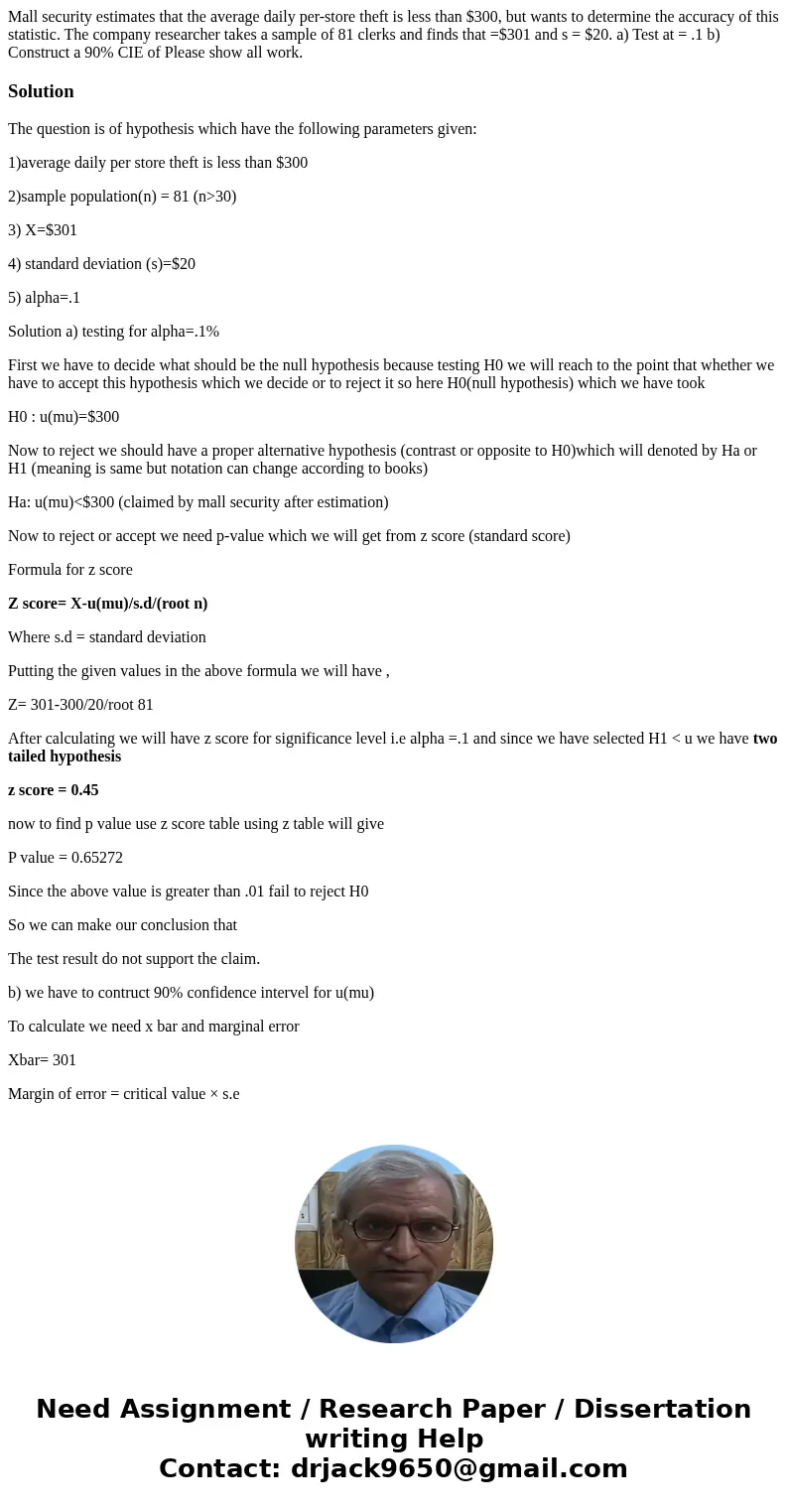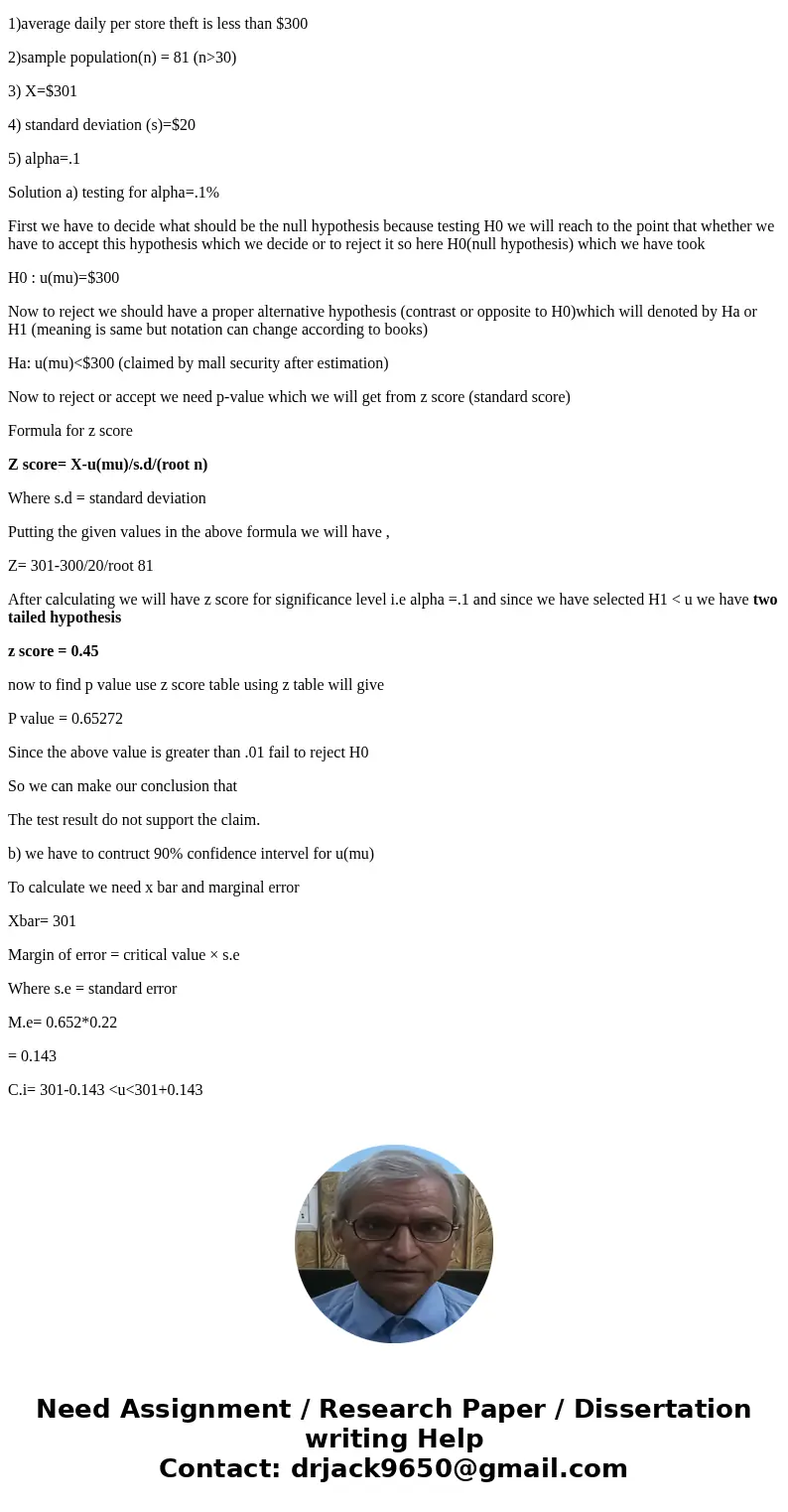Mall security estimates that the average daily perstore thef
Mall security estimates that the average daily per-store theft is less than $300, but wants to determine the accuracy of this statistic. The company researcher takes a sample of 81 clerks and finds that =$301 and s = $20. a) Test at = .1 b) Construct a 90% CIE of Please show all work.
Solution
The question is of hypothesis which have the following parameters given:
1)average daily per store theft is less than $300
2)sample population(n) = 81 (n>30)
3) X=$301
4) standard deviation (s)=$20
5) alpha=.1
Solution a) testing for alpha=.1%
First we have to decide what should be the null hypothesis because testing H0 we will reach to the point that whether we have to accept this hypothesis which we decide or to reject it so here H0(null hypothesis) which we have took
H0 : u(mu)=$300
Now to reject we should have a proper alternative hypothesis (contrast or opposite to H0)which will denoted by Ha or H1 (meaning is same but notation can change according to books)
Ha: u(mu)<$300 (claimed by mall security after estimation)
Now to reject or accept we need p-value which we will get from z score (standard score)
Formula for z score
Z score= X-u(mu)/s.d/(root n)
Where s.d = standard deviation
Putting the given values in the above formula we will have ,
Z= 301-300/20/root 81
After calculating we will have z score for significance level i.e alpha =.1 and since we have selected H1 < u we have two tailed hypothesis
z score = 0.45
now to find p value use z score table using z table will give
P value = 0.65272
Since the above value is greater than .01 fail to reject H0
So we can make our conclusion that
The test result do not support the claim.
b) we have to contruct 90% confidence intervel for u(mu)
To calculate we need x bar and marginal error
Xbar= 301
Margin of error = critical value × s.e
Where s.e = standard error
M.e= 0.652*0.22
= 0.143
C.i= 301-0.143 <u<301+0.143


 Homework Sourse
Homework Sourse